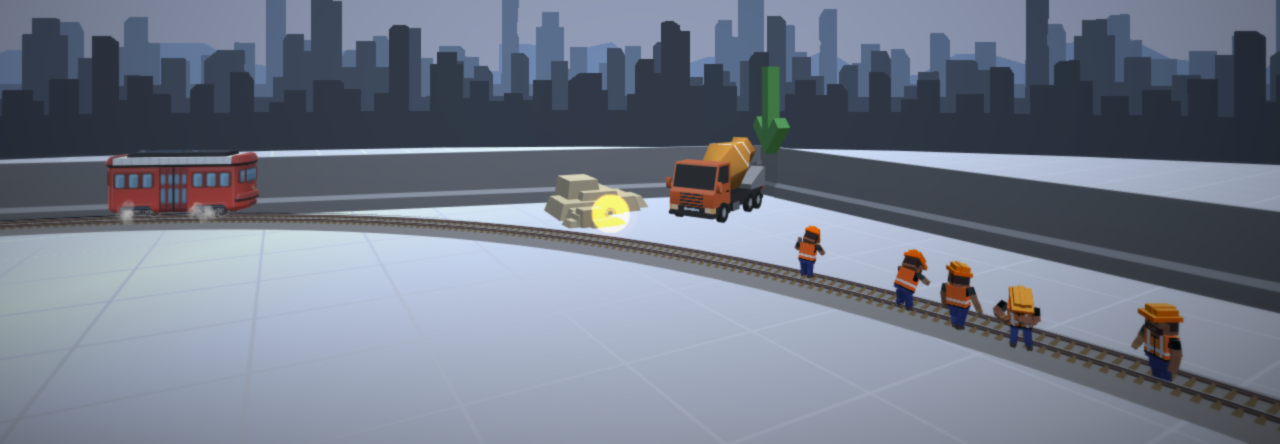Creating large game environments takes a large amount of time no matter how one goes about creating it. I’m quite interested in procedural generation to decrease production time and provide an easy way to add variety to environments. The upcoming game Sir, You Are Being Hunted is being designed using procedural generation of the English countryside.
Despite the fact that you get landscapes by pressing a button it’s such a large undertaking to make procedural generated spaces. The effort is direct more to code and bug fixies instead of other aspects of design. To get an idea of this, the Sir team wrote about procedurally generating the countryside.
One of the more complex regions are the village cells. These have detailed scripts to generate the layout of houses, roads and gardens. First, roads are drawn into the terrain splatmap extending out at different angles from the village centre. Then a series of functions line the roads with houses and other buildings. Finally there is a chance for houses to have a range of garden types behind them, these gardens are themselves populated by various scenery elements and other features. Villages provide a much more complex environment for exploration and combat, and may include lootable containers with valuable resources. They are also more likely to harbour enemies.

At BLDBLOG there is a piece on how their procedural countryside design is made with the added bonus of comparing it to an ongoing project in reality (at the end of the article). The countryside is being created digitally and physically.
There is another approach though, and that is modular design using kits.
Bethesda makes games set in expansive places like Fallout 3 and Skyrim. In fact, Skyrim is so large that I felt the need to make a post about it. The use of in-house art kits allow designers to create such vast lands to explore.
In a very in-dpeth post about modular design two designers from Bethesda (based off their GDC 2013 presentation) discuss their approach. I really appreciate how they connect what they are doing digitally with a physical comparison:
Kits aren’t a new idea. They aren’t unique to Bethesda or to the types of games we make. Consider the board game Carcassone. Unlike Monopoly or Scrabble, the board changes every time you play Carcassone. The tiles are arranged so that roads meet roads, rivers meet rivers, and so on, creating an effectively randomized yet visually cohesive whole. It’s easy to see the grid when looking at a Carcassone table, and how this system of art works together to make a unique play field.
Their post outlines how to rethink some aspects of the design process to better use time and other resources. They have stages of designing, testing, and iterating that are all worth looking into if you want to use modular design.

Throughout their post they mention the pros and cons of modular design from multiple perspectives. Some artists may find it scary (or just wrong) as an approach and level designers may find it to be limiting. I think that the most important take is the following:
Looking again towards the benefits of working modular, one of the big bonuses (especially from a production viewpoint) is that a modular approach helps if your team has a low ratio of artists to designers. Remember the ten people responsible for the dungeon content in Skyrim? Eight of them are the level designers, and only two represent the entirety of our full-time kit art team. They generated seven kits, which the level design team used to create well over 400 cells, or unique loaded interiors, of dungeon content. And those dungeons were built in about two and a half years, from start to finish.
At the end of the day is it better to use modular or procedural? There is no clear answer and in many cases they can be related to one another (just think that procedural needs modular pieces). It comes down to the skills on your team and what kind of game you’re building.
